Description
Prayer Rock
In February 1900, Church president Lorenzo Snow sent men to the Big Horn Basin of Wyoming to consider colonizing the area. Notwithstanding the temperatures stood at minus ten degrees, the decision was made to settle.
By spring a few hundred families had made their way to the area, facing down Wyoming winter storms as they went. By the end of May some two hundred hardy saints were camped on the banks of the Shoshone River. However, if they were going to succeed they would need food and shelter, but before any crops could grow on those arid high plains they would need water.
A canal was proposed to divert waters from the Shoshone River to irrigate the land they wanted to farm. Some said such an ambitious project could not be done but the leaders said, “We are united and can build it.” And build it they did. The canal ran thirty-seven miles over rough and impassable terrain and required the building of tunnels, suspension flumes and more. The Sidon canal would take them four years to complete.
Charles A. Welch who was there gave the following description of the tedium of the task:
“Day after day, week after week, and month after month it was ditch, ditch, ditch, and it took grit to keep it up. The grit was furnished by the winds that came up day after day as the table (usually a box) was laden with food to eat, and the puff of wind would cover the table with sand. You could write your name in the sand on the plate.”
At one point they encountered a formidable obstacle. A large rock lay directly in the course of the canal. It would have to be moved. President Byron Sessions, the canal superintendent, proposed that they dig beneath the rock on the lower side and with a little help from blasting powder, topple the rock into the hole and out of the way of the canal. The problem was that they dug down and down and could not get beneath the massive rock. One local resident, Mark Partridge, left the following account.
“One afternoon as President Sessions discussed the matter with the men working there,” his own son, Biney, expressed the discouragement that several of them were feeling: “‘We’ll never get this down. We just as well give it up.’ This seemed to anger his father, who said, ‘I p[r]ophecy in the name of Israel’s God that that rock will be in there tomorrow at this time.’ Jim George, one of the men working there, turned his back to President Sessions and faced me [Brother Partridge], pulled out his watch and said, ‘Let’s test him out.’ He said, ‘It’s just four P.M.’”
The work continued the next day. Using long handled shovels, the men dug in on both ends of the rock as far as they could reach, still without finding its end. They took their usual fifteen-minute break at 3:30 and had just begun working again when President Sessions called them up for another rest break, an unprecedented but quickly obeyed order. Then, without a powder blast, without so much as a tap from a hammer, “that rock began to split from top to bottom with a new break as smooth as a plastered wall and landed right where we had all been busy working five minutes before in a hole 10 feet deep. George, with the same watch, faced me again dumbfounded, [and] said, ‘Five minutes to four.’” The standing half of the rock is still visible; the fallen half was buried in the outside bank of the canal which flows smoothly and serenely between the two halves.
Today the site of the miracle is called Prayer Rock. At 5:00 pm April 23, 1904, the water reached the end of the great canal.
Sources: https://www.familysearch.org/tree/person/memories/KWC8-KFP
https://www.wyohistory.org/encyclopedia/mormon-colonizers-wyomings-bighorn-basin
Copyright Glenn Rawson

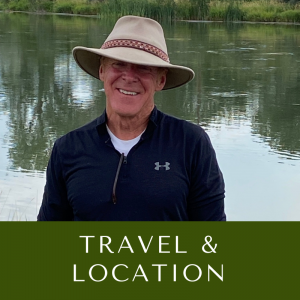
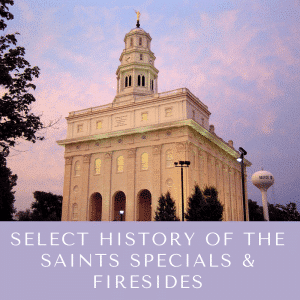


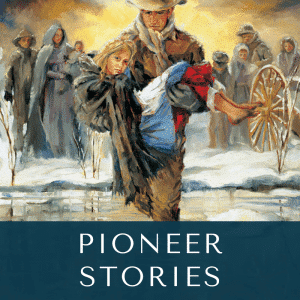

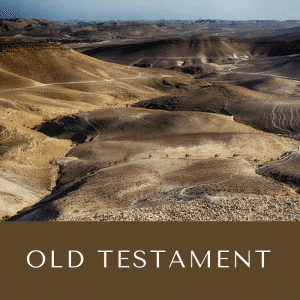


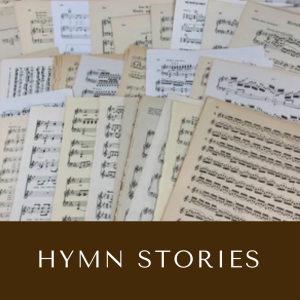
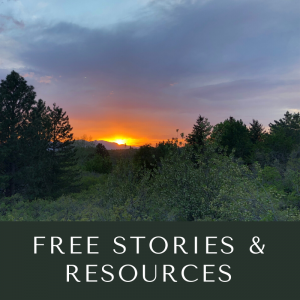

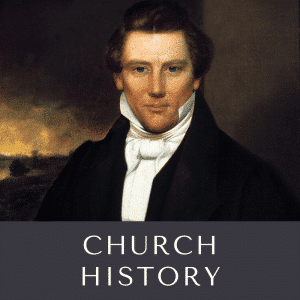

Reviews
There are no reviews yet.